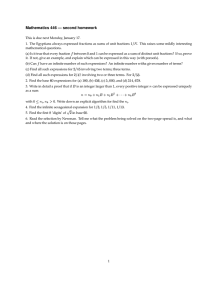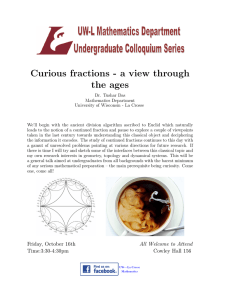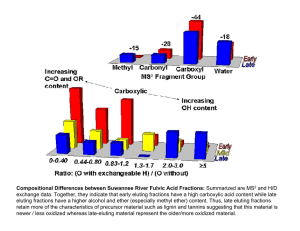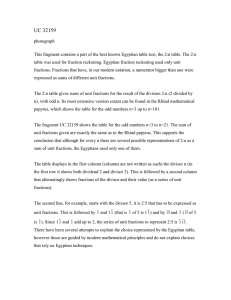We can list all the fractions in an infinite grid: 1
advertisement
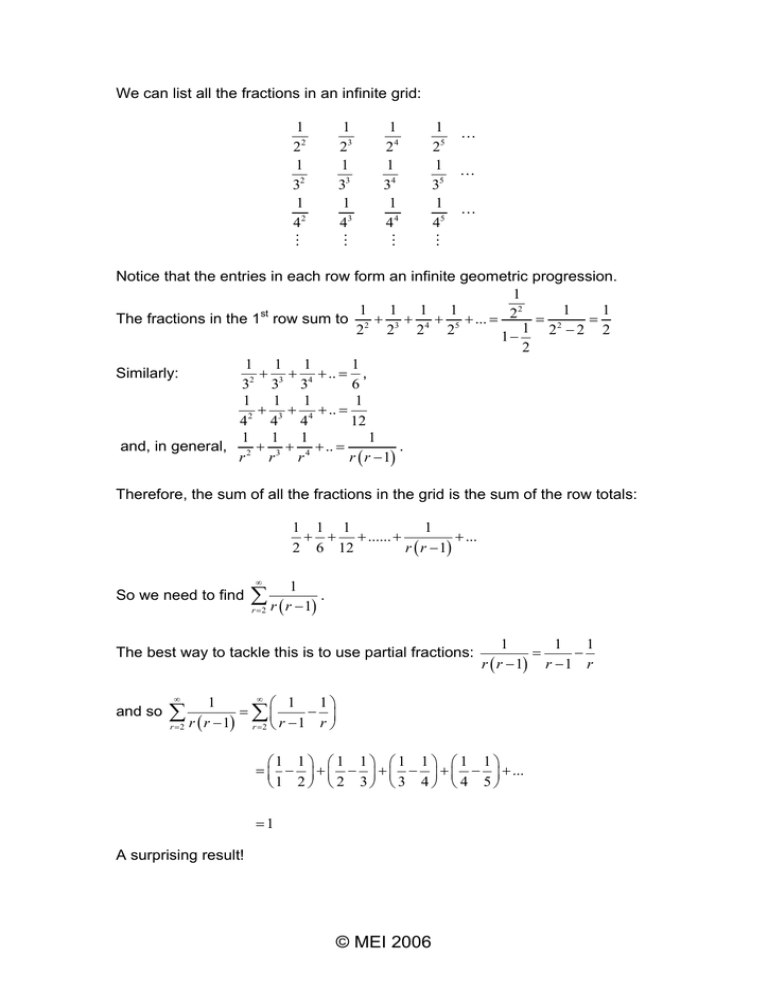
We can list all the fractions in an infinite grid: 1 22 1 32 1 42 1 23 1 33 1 43 1 24 1 34 1 44 1 25 1 35 1 45 Notice that the entries in each row form an infinite geometric progression. 1 2 1 1 1 1 1 1 The fractions in the 1st row sum to 2 3 4 5 ... 2 2 1 2 2 2 2 2 2 2 1 2 1 1 1 1 Similarly: 3 4 .. , 2 3 3 3 6 1 1 1 1 3 4 .. 2 4 4 4 12 1 1 1 1 and, in general, 2 3 4 .. . r r r r r 1 Therefore, the sum of all the fractions in the grid is the sum of the row totals: 1 1 1 1 ...... ... 2 6 12 r r 1 So we need to find 1 r r 1 . r 2 The best way to tackle this is to use partial fractions: 1 1 1 r r 1 r 1 r and so 1 1 1 r r 2 r r 1 r 2 r 1 1 1 1 1 1 1 1 1 ... 1 2 2 3 3 4 4 5 1 A surprising result! © MEI 2006


